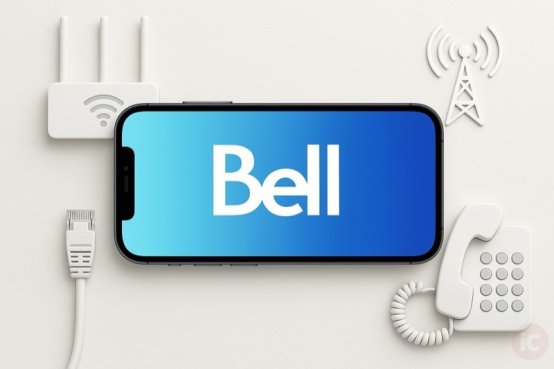Internet access is now a necessity for most households, yet the monthly charges can create serious pressure on family budgets. With providers frequently raising prices and adding hidden fees, many people end up spending more than they planned. Fortunately, there are several effective strategies to bring these expenses down while still enjoying a stable and reliable internet connection. This guide outlines practical methods to lower your internet bill without compromising service quality.

Reducing Costs Through Negotiation With Your Provider
Negotiating with your current internet provider is one of the most powerful ways to cut monthly costs. Many internet service providers (ISPs) are willing to adjust prices, but customers rarely take advantage of this flexibility. Start by researching competitor prices in your area to establish a benchmark. When contacting your provider, request to speak with the retention department, as they usually have the authority to grant better deals than standard customer service staff.
Make sure to reference competing offers and indicate you are ready to switch if needed. Studies show that customers who negotiate can often save between $10 and $40 per month. Stay courteous but firm, and do not settle for the first proposal if it falls short of your target. Providers generally prefer to retain customers at a lower rate rather than lose them altogether.
Senior-Friendly Unlimited Internet Plans
For seniors living on fixed incomes, discounted internet packages tailored to older users can provide substantial savings. Some large providers have special rates for customers aged 65 and over, though these programs may not be widely publicized. Basic plans at reduced costs—often between $10 and $30 per month—are commonly available.
Additionally, the Affordable Connectivity Program (ACP) offers eligible households, including seniors, a subsidy of up to $30 per month for internet service. When combined with senior-specific discounts, this can lower expenses significantly while still providing sufficient bandwidth for activities like video calls, streaming, and daily online tasks.
Budget Options From Leading Providers
The internet market includes a variety of affordable options worth considering. Cable providers often promote introductory deals that last six to twelve months, offering a chance to save in the short term. DSL connections, while slower than cable or fiber, are generally cheaper and suitable for light internet use. For households with modest needs, mobile hotspot plans can also serve as a cost-effective alternative.
Some companies provide “internet essentials” programs for low-income households, offering speeds between 25 and 50 Mbps at very low prices, usually $10 to $20 per month. Eligibility requirements apply, but these plans can make internet access affordable for many families.
Bundling vs. Standalone Internet Services
The common belief that bundled packages always save money is not universally correct. Combining internet with television, phone, or other services can reduce costs in some cases, but much depends on actual usage.
For example, if most of your entertainment comes from streaming platforms, adding a cable TV package may simply raise costs. Likewise, if you rely exclusively on a mobile phone, paying for a landline as part of a bundle may not be worthwhile.
Calculate the expense of purchasing only the services you truly use, then compare it with bundled packages. Often, a selective combination—such as internet with just one other service—offers the best balance between savings and convenience.
The Role of Equipment in Internet Expenses
The devices you use to connect to the internet can have a major impact on overall costs. Providers frequently charge monthly rental fees of $10 to $15 for modems and routers, which can accumulate into hundreds of dollars per year.
Purchasing your own equipment generally costs $100 to $200 upfront but eliminates monthly rental fees, usually paying for itself within a year. Personally owned devices also tend to offer stronger performance and more features compared to standard rental units.
Before buying, confirm that your chosen modem and router are compatible with your internet provider and plan. Most ISPs list approved models on their websites.
Internet Provider Pricing Comparison
Provider | Basic Plan Speed | Basic Plan Cost | Mid-Tier Plan Speed | Mid-Tier Cost | Equipment Fee |
Xfinity | 50 Mbps | $30-40/month | 300 Mbps | $50-60/month | $14/month |
Spectrum | 300 Mbps | $49.99/month | 500 Mbps | $69.99/month | $5/month |
AT&T | 300 Mbps | $55/month | 500 Mbps | $65/month | $10/month |
Verizon Fios | 300 Mbps | $49.99/month | 500 Mbps | $69.99/month | Included |
T-Mobile Home Internet | 35-115 Mbps | $50/month | N/A | N/A | Included |
CenturyLink | 100 Mbps | $50/month | Fiber 940 Mbps | $65/month | $15/month |
(Prices are based on the latest available data and may change. Independent research is recommended before making financial decisions.)
Applying for Subsidy Programs
Government and private subsidy programs can substantially lower internet costs for qualified households. The Affordable Connectivity Program offers up to $30 per month in savings ($75 for Tribal households).
Many providers also have low-income assistance programs, offering plans around $10 to $20 monthly. Eligibility is usually based on participation in federal programs such as SNAP, Medicaid, or housing assistance, or on income relative to poverty thresholds.
To apply, collect proof of eligibility and submit it through your provider or the program’s official website. While the application requires effort, the long-term financial benefits are significant.
Conclusion
By using strategies such as negotiating with providers, taking advantage of senior or low-income programs, choosing the right equipment, and carefully weighing bundled packages, consumers can achieve meaningful savings. These approaches help households maintain essential internet service for work, education, entertainment, and communication while keeping monthly costs under control.
